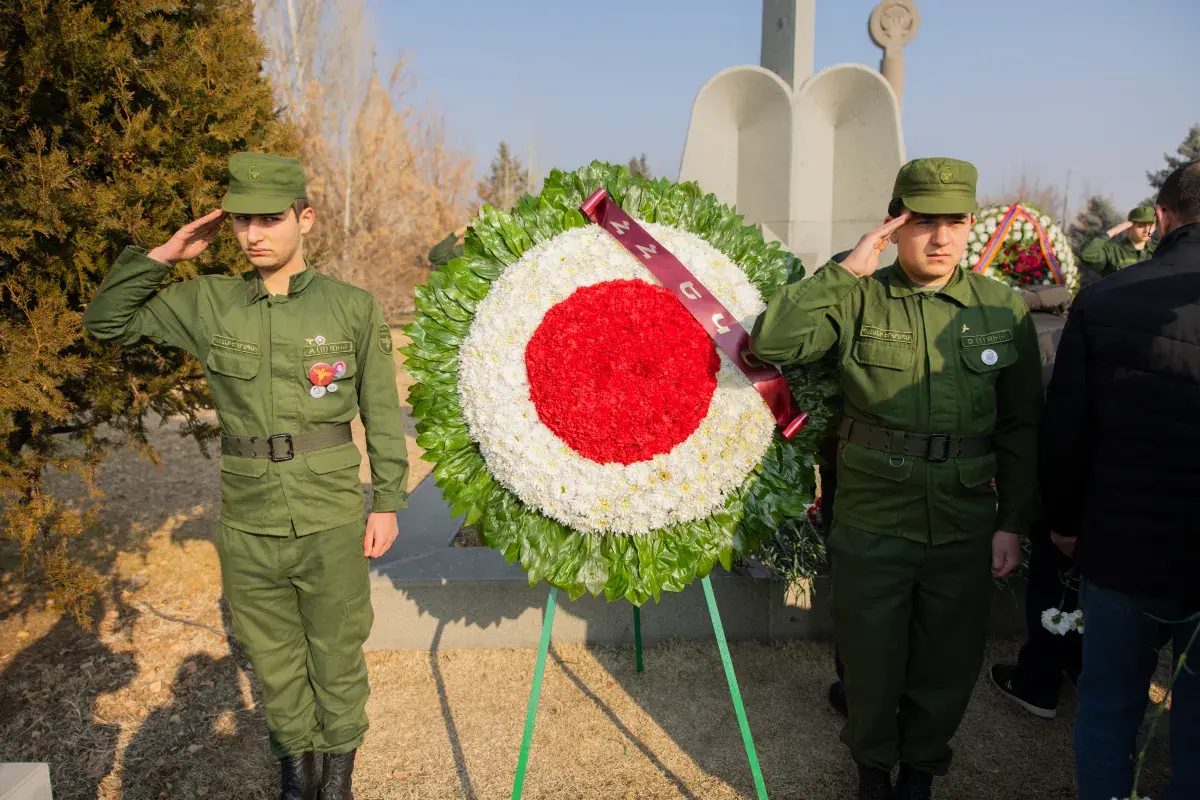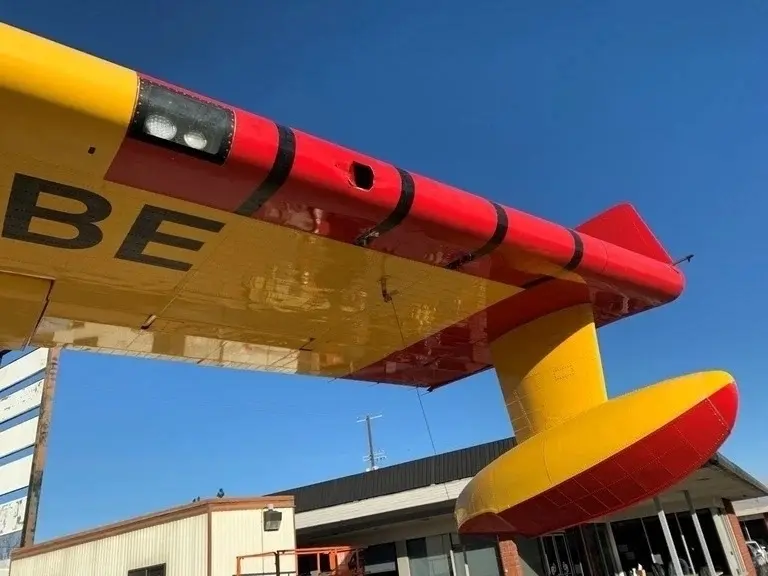
Most days are quiet in Armenia’s sleepy southern province of Syunik. The same cannot be said for the centuries.
Caught up in battles involving Turks, Russians, Persians, Mongols and Azerbaijanis, it lies on one of the most contested parts of the geopolitical faultline in the Caucasus. For some, this marks where Europe ends and the East begins. The question now is whether a new deal secured by U.S. President Donald Trump can bring lasting peace after the most recent decades of war between Armenia and Azerbaijan.
“I have anxiety that history repeats itself,” said 47-year-old Father Avetiq Mardirosian while standing in the garden of the Vahanavank Monastery, where he is the spiritual leader. “If we don’t love our motherland, God will give it to the enemy.”
The U.S. brokered accord between Armenia and Azerbaijan is among those that Trump hails to demonstrate his dealmaking skills—and his possible place as a Nobel Peace Prize contendor—even as he faces much greater challenges with his diplomacy in the Middle East and in trying to seek an end to the Russia-Ukraine war.
A State Department spokesperson said in an email: “The President has yet again shown that we can move beyond longstanding conflicts of the past and move towards a peaceful and prosperous future.
“Peace saves lives and unlocks prosperity, both at home and abroad. This peace deal benefits us all and every country can get behind it.”
The governments of Armenia and Azerbaijan did not respond to requests for comment.
The Washington Accords, unveiled this summer, hinge on the Trump Route for International Peace and Prosperity (TRIPP), which links two parts of Azerbaijan that are separated by Armenia. TRIPP is a joint U.S.-Armenian venture under Armenian sovereignty. Sealing the deal averted a potential Azeri invasion to secure unfettered access after Azerbaijan’s forces inflicted heavy defeats on Armenia’s army in 2020 and 2023 and pushed 120,000 Armenians out of Nagorno-Karabakh.
Historic Deal
The deal looks historic. For Armenia and Azerbaijan, it offers normalization within three years. It also establishes Washington as the decisive geopolitical actor in the South Caucasus, which borders Iran and was long under Moscow’s influence as a former part of the Russian Empire and Soviet Union. Yet the central tension is unmistakable: can a framework built on personal diplomacy and economic incentives endure?
Nerses Kopalyan, assistant professor of political science at the University of Nevada, Las Vegas, explained the thinking.
“Instead of peace first, then investments, let’s go in with the incentive of investments, get them to normalize and then they will sign peace,” he told Newsweek.
In negotiations, Azerbaijan initially demanded unimpeded access through the “Zangezur Corridor” of southern Armenia to its exclave of Nakhchivan – including for military cargo. The United States rejected that. The compromise involves inspections by a third-party contractor, only commercial access, and no contact between Armenian officials and transiting Azerbaijani.
“From Azerbaijan’s perspective, its demands are met,” said Ahmad Alili, director of the Caucasus Policy Analysis Center in the Azerbaijani capital, Baku. “The key to success will lie in creating clear standard operating procedures that define responsibilities in the event of incidents.”
Why the U.S. Cares
The South Caucasus may not be one the world’s best-known regions, but it is highly strategic. It has become a link in China’s Belt and Road transport and infrastructure Initiative.
A U.S.-sponsored corridor—but without U.S. troops or bases—is a low-cost solution that could disrupt China’s plans, exclude Russia, and sideline Iran as well as increasingly assertive NATO member Turkey. As Kopalyan put it, TRIPP let the U.S. “knock down 10 birds with one stone.”
Armenians view the American presence as a deterrent to Azerbaijani offensives. Azerbaijan’s army is twice as large and it vastly outspends Armenia. It also has advanced hardware and tactical know-how developed through relationships with Israel and Turkey.
But doubts over the deal persist.
Armenian prisoners of war in Azerbaijan remain a point of friction and the rhetoric over the corridor has not died down. At the United Nations on September 26, Azerbaijani President Ilham Aliyev again invoked the issue of the “Zangezur corridor” in spite of the Trump-brokered agreement, where it is never mentioned, provoking a bitter reaction from Armenian Prime Minister Nikol Pashinyan.
Regional Spoilers
There are also those in the region who may have an interest in the deal failing.
Russia, once the indispensable powerbroker in the region, could lose out. Its Foreign Minister Sergey Lavrov has voiced skepticism.
“Moscow views the process as a direct loss of leverage and is likely to test red lines with calibrated disruptions,” said Alili. Those could take the form of local incidents, covert pressure, or disinformation campaigns, he said.
Iran’s reaction is similarly complex. The Islamic Republic, which neighbors Armenia to the South, could perceive TRIPP as a threat to its North-South Corridor ambitions and as a possible cover for U.S. intelligence activities.
“There are interesting dynamics within Iran between hardliners and more pragmatic softliners, who are inclined towards economic cooperation with neighboring states,” said Alili.
However, Armenia’s regular communication with Tehran and the late August visit of Iran’s president to Yerevan may have mitigated concerns and boosted trade—evident in the steady flow of Iranian trucks across the border and snaking up Armenia’s mountain passes on a route for goods that can ultimately lead through Georgia to Black Sea ports or Russia.
Strategic Partners
For Armenia, the partnership is already strategic, encompassing logistical projects, border security, cyber defense, and technology. The first step is the construction of a $500 million AI factory. For Azerbaijan, the framework signals an upgrade toward strategic partnership with Washington.
This deepening relationship suggests that Armenia is being woven into U.S. supply chains, creating interdependence that could bolster its security. “The Washington Accords weren’t simply the Trump Route,” Kopalyan says.
The U.S. State Department on September 11 announced a $145 million investment package. Other watershed events—such as convening inaugural working groups, as stated by a spokesperson from the U.S. State Department—are planned before year’s end.
“The entry of the U.S. into the region is seen as a game-changer,” says Alili.
For Kopalyan, “Even if in five or 10 years from now Russia wants to return to the South Caucasus, it is going to be a completely different environment than the past.”
While Kopalyan and Alili see the Accords as a credible initiative, there are suspicions on the ground in Syunik too—and in particular that Azerbaijani forces could use the deal as a way to ultimately secure control for themselves.
“Under the mask of trade, they could bring military forces inside Armenia and then start something from the inside,” said 60-year-old Ruzanna Tsatryan, who was among those who were driven out of Nagorno-Karabakh in 2023.



